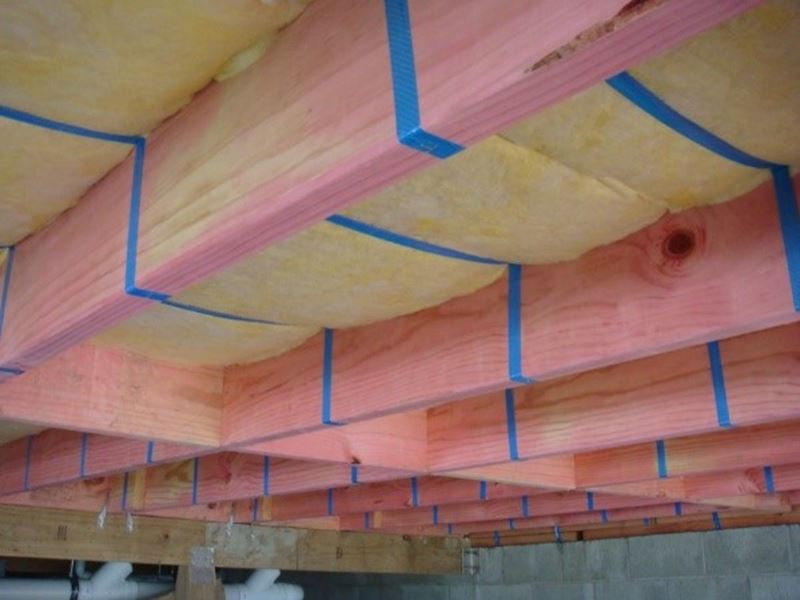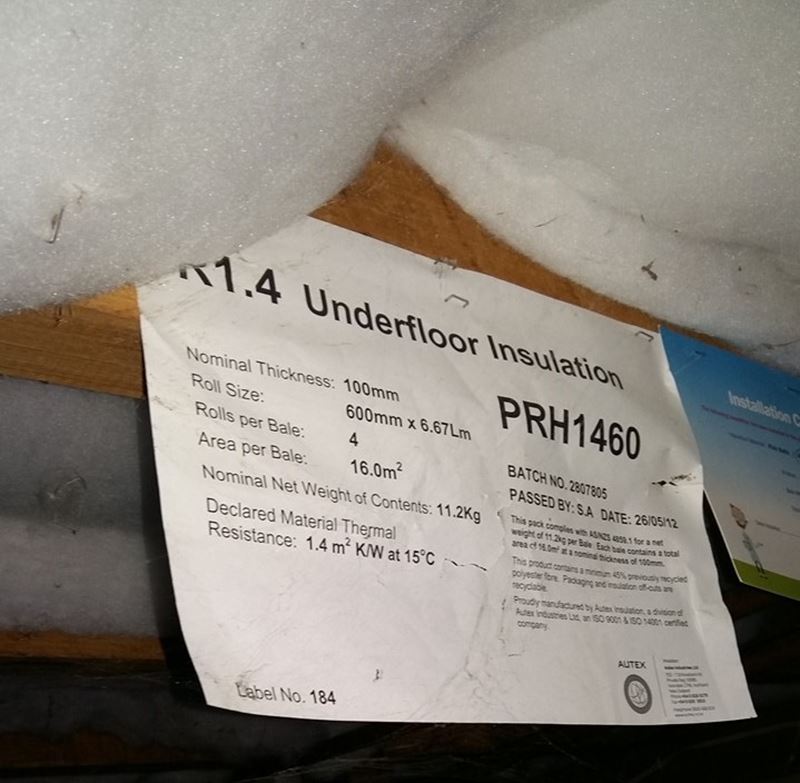Floor insulation: According to the House Condition Survey 2015 at least 40% of homes do not have enough ceiling insulation and over 50% of homes with subfloors do not have enough insulation under the floor.
Health and safety moment: Before you answer this question make sure the space under the home is safe to access. Do not enter if the height of the space is restricted and you think you might get stuck. See page 127 of this PDF
Floor insulation - what to look for
If there is any bulk insulation in your crawl space then it will usually be installed between the joists under your floorboards.
Some older homes have a very low space under the floorboards which makes it impossible to see how much insulation there is. If this is the case you should assume there is no underfloor insulation.
Look for a label like the one in the photo below. This will tell you the R-value (how warm the insulation is) and how thick it was when it was installed.

Yellow fibreglass insulation

Insulation is often installed with a label showing the R-value. In this case the underfloor insulation has an R-value of R1.4. The label also shows that the insulation is 100mm thick.

This crawl space has no insulation at all.
Why having floor insulation is important
Insulation is the cheapest form of heating. A $4,000 investment in roof and underfloor insulation will pay for itself many times over the lifetime of the home and will give immediate benefits in comfort and health for the household.
The Building Code requires all new homes to have insulation in roofs, walls and floors, as well as having double glazing. But about half of our existing homes do not even have enough insulation in the roof and/or underfloor. This is a huge opportunity to lower power bills and greenhouse gas emissions from home heating and reduce hospitalisation and time off work or school due to sickness directly caused by cold, damp homes.
The first areas to insulate are roofs and under suspended floors because it is easy and cost-effective in many homes. As of 1 July 2019, all private rental properties need roof and underfloor insulation wherever practical.
The government’s Warmer Kiwi Homes programme provides grants for roof and underfloor insulation to eligible homeowners (owner-occupiers) on low incomes. For more information, see Funding for Insulation. Other financial assistance can be found on the HomeFit finance options page.
ANZ has an interest-free home loan top up for home improvements. Click here for more details.